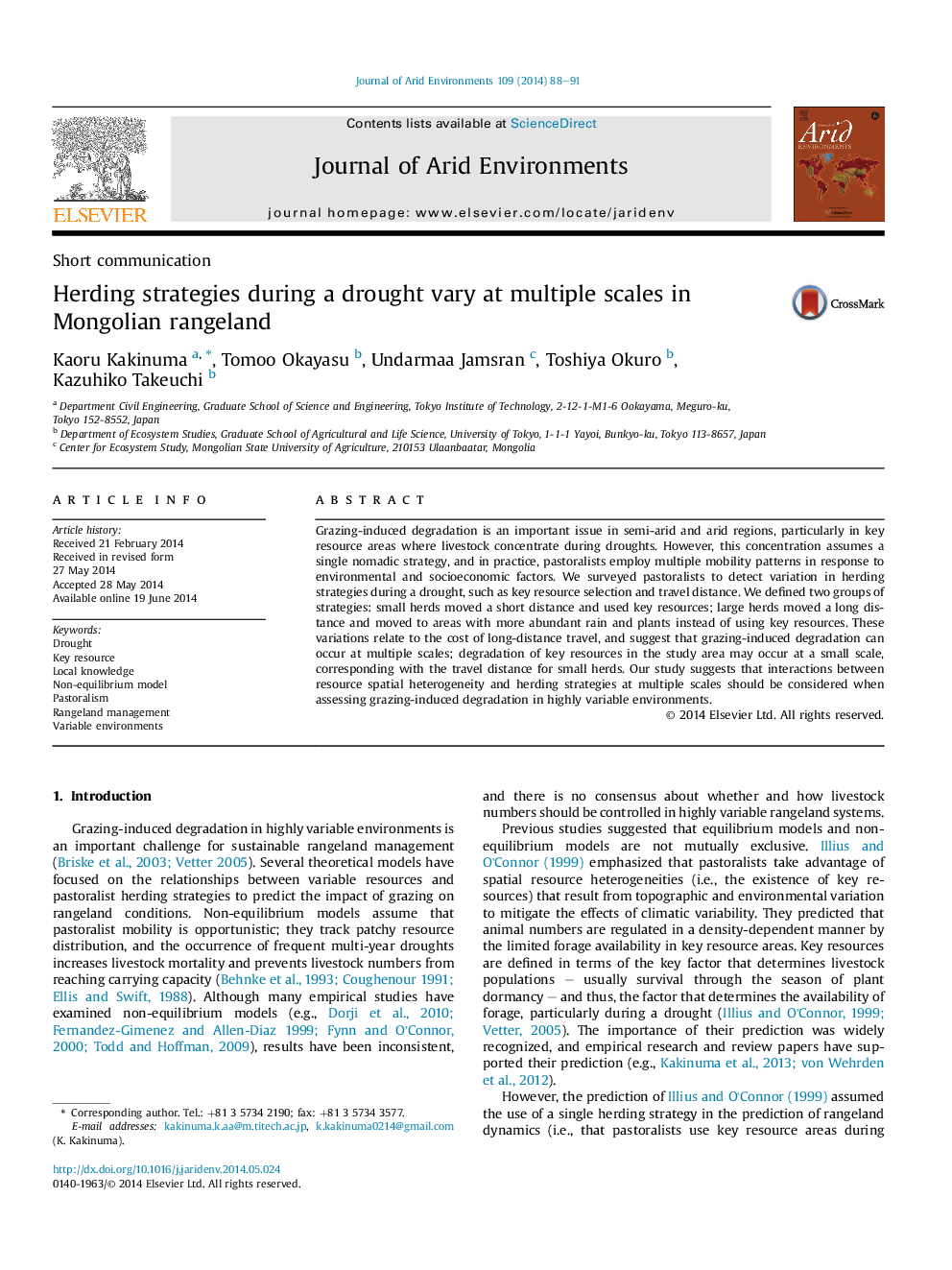| Article ID | Journal | Published Year | Pages | File Type |
|---|---|---|---|---|
| 4392983 | Journal of Arid Environments | 2014 | 4 Pages |
Abstract
Grazing-induced degradation is an important issue in semi-arid and arid regions, particularly in key resource areas where livestock concentrate during droughts. However, this concentration assumes a single nomadic strategy, and in practice, pastoralists employ multiple mobility patterns in response to environmental and socioeconomic factors. We surveyed pastoralists to detect variation in herding strategies during a drought, such as key resource selection and travel distance. We defined two groups of strategies: small herds moved a short distance and used key resources; large herds moved a long distance and moved to areas with more abundant rain and plants instead of using key resources. These variations relate to the cost of long-distance travel, and suggest that grazing-induced degradation can occur at multiple scales; degradation of key resources in the study area may occur at a small scale, corresponding with the travel distance for small herds. Our study suggests that interactions between resource spatial heterogeneity and herding strategies at multiple scales should be considered when assessing grazing-induced degradation in highly variable environments.
Keywords
Related Topics
Physical Sciences and Engineering
Earth and Planetary Sciences
Earth-Surface Processes
Authors
Kaoru Kakinuma, Tomoo Okayasu, Undarmaa Jamsran, Toshiya Okuro, Kazuhiko Takeuchi,
